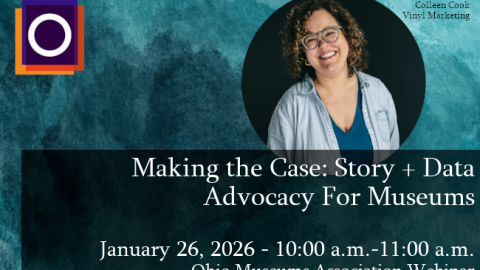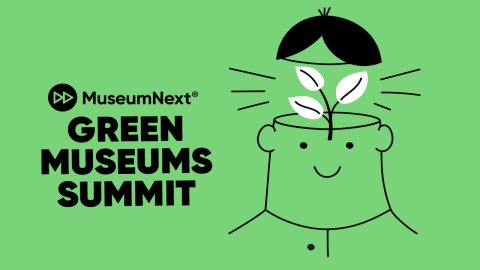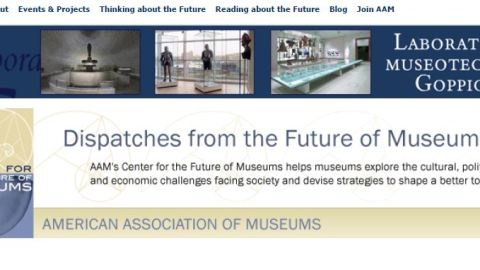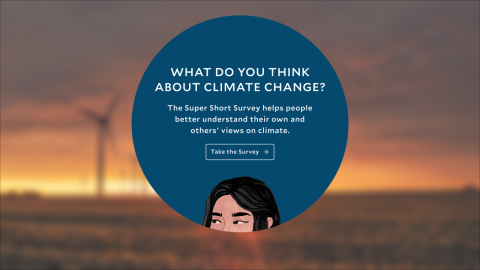
This post was originally published on Medium, December 20, 2017.


Over the last few years, museum workers have been increasingly vocal about job dissatisfaction. At the 2015 American Alliance of Museums (AAM) annual conference, several museum workers hosted a rogue session on the connections between museum labor practices and social justice, which would later evolve into Museum Workers Speak. In the summer of 2017, Claire Milldrum, a former museum professional, wrote three blog posts on why she left the field. And in September 2017, Claudia Ocello, Dawn Salerno, Sarah Erdman, and Marieke Van Damme posted a report summarizing the results of their 2016 survey on why people leave the museum field. Discussions of museum working conditions are also a common topic on various social media outlets, like Facebook groups and subreddits.
These conversations aren’t a new phenomenon; they’re part of a larger genre, colloquially labeled “quit lit.” Megan Garber, writing for The Atlantic in 2015, traces the roots of this public form of disillusionment to Robert Graves’ 1920 memoir, Good-Bye to All That. Looking at more recent examples, Garber suggests “there is something particularly contemporary — and particularly Internetty — about quit lit.” Many authors of quit lit, Garber argues, express their loss and dissatisfaction as moral outrage. Among museum professionals, the outrage is strong — and it’s not going anywhere.
Public pronouncements of professional dissatisfaction aren’t unique to the museum field. There are dozens of declarations of quitting from those leaving careers in high-prestige, low-pay sectors, particularly journalism and academia, across various outlets. While the Internet’s constant churn of content and the rise of self-publishing platforms have likely helped drive the resurgence of quit lit, there are deeper, structural forces pushing people to publicly criticize their industries. Collectively, these critiques reveal something about the changing nature of employment, as well as about how class, race, and gender shape experiences of job dissatisfaction. What might we learn from these conversations to rethink the ways museums are structured?
The dissatisfaction expressed by museum workers shares some similarities with that of journalists and academics. Structurally, all three industries are characterized by an oversupply of qualified candidates and a dearth of opportunities, as well as low pay, lack of internal mobility, and increasing precarity. Unsurprisingly, many authors attribute quitting to an inability to sustain themselves financially. In Ocello et al.’s 2016 survey, the most cited reason for leaving the field was low pay. The quit lit from journalists and academics reveals similar concerns about pay, especially relative to workload.
Low pay might matter less if it weren’t for the fact that workers in these fields invest immense resources into their careers. Museums workers typically pursue higher education and work for free in the form of unpaid internships. The American Alliance of Museums’ 2014 National Comparative Museum Salary Study found that 90% of respondents had earned at least a bachelor’s degree, and well over 50% of respondents in upper-level and managerial positions possessed a graduate degree. And as Nicole Ivy, Director of Inclusion at AAM, notes, there is a “prevalence of unpaid work — and work paying less than a living wage” in the museum sector. Alyssa Greenberg, Ph.D., Leadership Fellow at the Toledo Museum of Art, agrees. Speaking on her own behalf, Dr. Greenberg also cited unpaid internships and underpaid positions as two key professional challenges facing museum workers. Unpaid internships abound in journalism as well. And it’s no secret that much work in academia occurs outside the core duties of teaching an research, nor that student loan debt exceeds earning potential.
Respondents to Ocello et al.’s survey also cited a lack of opportunities for advancement (and, relatedly, a lack of professional development opportunities) as a key reason for leaving the field. Museums typically offer far more poorly paid, part-time jobs than full-time office jobs, and curatorial positions are notoriously rare. In an email interview, Dr. Greenberg also noted the prevalence of short-term or temporary museum jobs. In academia, there is stiff competition for tenure-track jobs, while temporary postdocs and precarious adjunct positions abound. As the digital turn undermines journalism’s business model, the industry has followed the trend toward freelancing in the American economy, leaving few full-time, salaried positions available.
What motivates people to pursue this poorly paid work? Quit lit authors from the nonprofit and cultural sectors frequently invoke the idea that their work is more than “just” a job; it’s a personal passion and a way to make the world a better place. The numbers back this up: according to a recent study by the Pew Research Center, 77% of people with a postgraduate degree say their work gives them a sense of identity. The same study found that 65% of those who work for a nonprofit organization find a sense of identity in their job.
But the professionalization of passion can breed dissatisfaction. As we’ve discussed, finding employment in these fields requires sacrifice (and privilege), typically in the form of a four-year college degree, graduate education, unpaid internships, or low salaries. Combine these factors, and you have workers who feel they are owed something more than a pittance. When it comes to museums, Elizabeth Merritt, Vice President of Strategic Foresight and Founding Director of the Center for the Future of Museums at AAM, suspects that dissatisfaction is also correlated with the professionalization of jobs that formerly were not professional — and the heightened expectations that accompany that shift. As she put it, “What are the expectations for people who feel they’re going into a profession as opposed to just taking a job?”
Ultimately, the roots of this dissatisfaction are inextricable from structural changes in the American economy wrought by globalization and automation. Theorists Michael Hardt and Antonio Negri characterize these changes in three ways: the rise of immaterial production, the importance of affective labor, and the feminization of labor. Increasingly, value is determined not by the production of material goods but by the production of “images, information, knowledge, affects, codes, and social relationships” (Hardt and Negri 2009, 132). In the informational economy, all work increasingly shares the key characteristics of women’s reproductive labor: flexibility, precarity, and low pay.
Hardt and Negri particularly note the difficulties of quantifying immaterial labor:
It is easy, of course, to see and count the automobiles, steel beams, and refrigerators that roll out the factory gates or the tons of grain from the farm, but how can you put your finger on the immaterial products that become predominant in the biopolitical economy — the images, codes, knowledges, affects, and even social relations and forms of life? (Hardt and Negri 2009, 266)
The challenges of accounting for immaterial production may help explain low wages in these three industries, but professionals in other sectors of the knowledge economy, such as law and finance, are well compensated. In the case of museum workers, the difference lies in the increasing importance of affective labor as well as the feminization of the industry. Over the past several decades, the “educational turn” has transformed museums. Museum education is now central to institutional missions, pedagogical theory is increasingly applied to other areas of museum work, and many museums are also emphasizing outreach and community engagement. All of these activities require that museum workers possess “soft” skills, such as cultural competency and facilitation. These soft skills are closely associated with feminized labor and are accordingly undervalued. Museum educators and other frontline workers, such as historical interpreters, possess the expertise required to perform the affective labor that is so important to museums, yet they remain some of the lowest-paid professional workers in the sector.
Indeed, the issues described above are compounded for people of color, who often find themselves outsiders in all-white institutions. As Vu Le, author of Nonprofit AF and Executive Director of the Rainier Valley Corps noted, these workers disproportionately shoulder the burdens of practices like unpaid labor, low pay, and wage discrimination, not to mention the mentally and emotionally taxing work of “diversifying” institutions. Le cited a number of factors that drive people of color to leave the nonprofit field, including a lack of understanding about equity, oppression, and social justice in overwhelmingly white organizations. This is true in the museum sector as well. Institutions often position themselves as committed to community engagement and social justice yet maintain barriers to diversity, preserving them as bastions of privilege.
Just as there’s no shortage of “leaving the field” essays, there’s no shortage of recommendations for how to be happy (or remain sane) if you choose to stay in your field. Many of these recommendations focus on what individuals can do: various forms of self-care, not checking email on weekends, setting personal boundaries around working hours, communicating expectations with one’s manager, and finding a work buddy to vent to. While helpful, this advice discourages professionals from working together to solve structural issues. With this in mind, we want to offer some recommendations that museum administrators can use to improve staff retention and morale, foster diversity and equity, and align institutional values with workplace culture. In pursuing these themes, we are indebted to the work of the many dedicated individuals behind The Incluseum and Museum Workers Speak, which have been instrumental in advancing these conversations over the last few years.
Before we begin, we want to make two important points. We want to emphasize that these changes cannot happen in a piecemeal fashion. Many of our recommendations require re-thinking how museums are structured and run. Because of their systemic nature, no single museum can make these changes alone, and we hope that this article provides a starting point for a larger conversation across the museum sector. Second, we understand the constraints that administrators operate within, particularly the challenges of making institutional changes in the face of a tentative or even resistant board. In order for these changes to happen, we recommend that administrators cultivate strong relationships with board members and work to bridge the divide between board and staff. Making these changes is not easy, but they are necessary in order to foster an institutional culture of transparency, mutual understanding, and trust.
In preparation for this essay, we spoke to a number of museum professionals and asked for their thoughts on how to keep workers in the field. Our recommendations stem from their responses, as well as from a synthesis of other strategies we’ve come across in our research. Our first recommendation is that any discussion of improving museum working conditions must start with a discussion of equity. What are the bottlenecks that determine who has access to museum jobs, who can afford to take these jobs, and who can afford to stay? Identifying these bottlenecks and their effects is a necessary first step.
In our research, we found one piece of advice that is nearly unanimous: eliminate degree requirements. Instead of looking to higher education as a guarantee of quality, consider what skills are required, what are optional, and what can be transferred from other jobs and sectors. Once you’ve identified these assets, think creatively about how they might reveal themselves on a resume, in a cover letter, or in an interview. Nicole Ivy suggests seeking “people with forms of expertise that are not typically associated with museum studies degrees. Community organizers, people with backgrounds in new media and STEAM, cultural thought leaders and those skilled in multilingual communications can all bring innovative skills to museums.” Given the increasing importance of affective labor in the American economy and in museum work specifically, we also suggest that recruiters look for workers with frontline experience in the service sector, such as restaurant managers. Implementing these changes requires understanding how other industries frame and market jobs. Hiring managers should familiarize themselves with examples of job postings from other sectors and consider new avenues for advertising job postings in order to attract non-traditional candidates.
Another critical barrier to entry in museums is unpaid internships. As with degree requirements, we recommend eliminating unpaid internships. This requires advocating for funding from your board or seeking other forms of funding, such as grants or even corporate sponsorships. Most importantly, make it a formal institutional priority. In addition, rethink how internships are structured. As Cait Reizman noted in the 2015 AAM “Rogue Session”, internships shouldn’t be framed as small-scale jobs that lead to future employment. Instead, they should be treated as educational opportunities and structured as such. (It bears repeating that this is a legal requirement according to the Fair Labor Standards Act, which in theory treats work opportunities that do not have education as their primary purpose as employment deserving of minimum wage. However, as of now this legal requirement does not apply to nonprofits.) This includes making internships time-bound and clearly communicating the purpose of the internship throughout the recruiting process.
Eliminating degree requirements and radically restructuring internships can seem daunting, but consider how these changes might create space to invest in existing workers. In addition to moving away from rigid qualifications, Elizabeth Merritt suggests that museums offer more on-the-job training in the form of workshops, short courses, and other professional development opportunities. Museums should also create opportunities for internal advancement for part-time, frontline, and security, maintenance, and service staff. This might be accomplished through internal trainings and job workshops, as well as creating new recruiting avenues for internal hires.
When considering who can stay in a museum job, pay is not the only factor; it’s also necessary to consider organizational culture. Vu Le suggests that organizations implement mandatory trainings for staff on issues of race, social justice, disability, and gender identity. Others have echoed these thoughts, emphasizing the need for internal trainings to create safer and more inclusive organizational cultures and workplaces. Without turning a critical lens inward, museums will continue to be unwelcoming places to work and our colleagues of color will continue to leave the field.
Le also argues that the professionalization of passion is not a bad thing, per se, but that the expectations placed on nonprofit workers — long hours, low pay, emotionally taxing work — make this unsustainable. Instead, he suggests implementing policies that make it easier for workers to navigate the increasingly blurred lines between work and life. These include adopting flexible hours, offering childcare at work (or allowing workers to bring their children to work when necessary), and benefits like paid family leave and unlimited vacation. It’s worth noting that these changes will particularly benefit women (and thus the majority of museum workers) by easing the burden of the “second shift” — the unpaid labor of childcare and household management that many women still perform.
Ultimately, the recommendations we outlined above are about transforming the museum workplace to accommodate the realities of work in the 21st century. This starts with acknowledging and appropriately compensating undervalued and invisible forms of labor, and implementing equitable policies that cultivate and sustain museum workers in their labors of love.
We recognize that this is not a comprehensive list of strategies but rather the continuation of a larger, ongoing conversation. With this in mind, we want to invite other museum workers, and especially administrators, to join the conversation. You can reach Emma at @_eeems_ and Maddie at @maddiemott, or by tagging your tweet with #revaluingmuseumwork.
For further reading on this topic, we recommend the following pieces:
A recap of the 2015 AAM rogue session. https://storify.com/MuseumWorkers/aam-2015
Sarah Erdman, Claudia Ocello, Dawn Estabrooks Salerno, and Marieke Van Damme, “Leaving the Museum Field.” https://www.aam-us.org/blog/leaving-the-museum-field
Michael Hare, “Hard Times at Plimoth Plantation.” https://theoutline.com/post/2511/hard-times-at-plimoth-plantation
Nicole Ivy, “The Labor of Diversity.” https://www.aam-us.org/docs/default-source/museum/the-labor-of-diversity.pdf
Amy Tyson, The Wages of History: Emotional Labor on Public History’s Front Lines. http://www.umass.edu/umpress/title/wages-history
Andy Urban, “Lifting the curtain on living history.” http://ncph.org/history-at-work/lifting-the-curtain-on-living-history
About the authors:
Maddie Mott is a Master’s student and fellow in Public Humanities at Brown University. Before coming to Brown, she worked in development at the Clackamas County Historical Society and the Oregon Museum of Science and Industry in Portland, Oregon.
Emma Boast is a Master’s student in Public Humanities at Brown University and Graduate Curatorial Fellow at the Brown Arts Initiative. Before coming to Brown, she was the Director of Exhibitions and Programming at the Museum of Food and Drink in Brooklyn, NY.






Your essay describes the trends in higher education too common institutionalized inequities among faculty are common. Instructors, who the greatest number of courses and students to teach have little if any job security, little to no power instruction-ally or politically. Instructors are often second class citizens; most certainly in Tier One Research institutions.
YES! Thank you!!!
Thanks so much, Maddie and Emma, for your thorough and well-written discussion about the state of museum compensation. I would like to call your attention to a book a I recently co-authored with Joan Baldwin, Women in the Museum: Lessons from the Workplace, which examines museum work through the lens of gender. In it, we feature the stories of many museum women who work hard to navigate the museum workplace and we offer up thoughts about what makes a great museum workplace for all workers and an agenda for action.
Joan also writes weekly at our blog, Leadership Matters, on issues of museum pay, pay equity, equitable workplaces and transforming the museum workplace to accommodate the realities of work in the 21st century.”
Lastly, Joan and I, along with Marieke Van Damme and Jessica Ferey, are the co-founders of the Gender Equity in Museums Movement (GEMM), which is an active and growing group of people committed to moving the needle on the gender piece of the conversation.
I hope you’ll explore our book, the Leadership Matters blog, and the GEMM website and FB page.
Re: ideas about labour of love & personal passion:
I believe that our thinking about all this should include the sociology of work by:
Stebbins, Robert A. 2004. Between Work and Leisure: The Common Ground of Two Separate Worlds. New Brunswick, USA: Transaction Publishers.
In a nutshell:
According Stebbins (2004, ix, 10), museum, library, and archives workers occupy a unique category of people referred to as “occupational devotees:” Occupational devotion is a strong and positive attachment to a form of self-enhancing work, where the sense of achievement is high and the core activity (set of tasks) is endowed with such intense appeal that the line between the work and leisure is virtually erased. Stebbins argues that occupational devotees work with a high value commitment and a “profound love for the job” that, significantly, is regarded as “socially important, highly challenging, intensely absorbing, immensely appealing . . . rewarded by self-actualisation or self-development” (Stebbins 2004: 10, cf. 17, 76).
We need to understand such internal drivers as much as the externals.
Your work is much needed. Please keep it up. I believe we must operate on the Cockburn principle:
“kick at the darkness ’til it bleeds daylight.” Bruce Cockburn (1983) “Lovers in a Dangerous Time.”
All of the points in this and other recent articles are important. As a field we need to curb the practice of unpaid internships, the tendency to undervalue those that interact with audiences (ex: acceptance that while we would have a volunteer curator, volunteer educators are OK); the low wages often offered to those who are expected to have a Masters degree and five years of experience, etc. There are two elements I would love to see discussed more in relation to these issues and the job dissatisfaction of museum workers. For the former a wider lens – how does lack of government investment in arts and culture contribute to museums of all kinds trying to serve their audiences on a shoestring – leading to low wages and overburdened staff? For the latter, how does this job dissatisfaction in museums somewhat mirror “career impatience” noted in general about the millennial workforce – where not just raises but also title advancement expectations are on a much shorter timeline than in the past, and beyond what may be practical for a smaller institution (how many managers does one department need)? What can we learn from other fields about keeping staff engaged and developed when advancement isn’t practical? Thank you AAM for giving a forum for these important discussions to happen!
That should say “we would NEVER have a volunteer curator”!